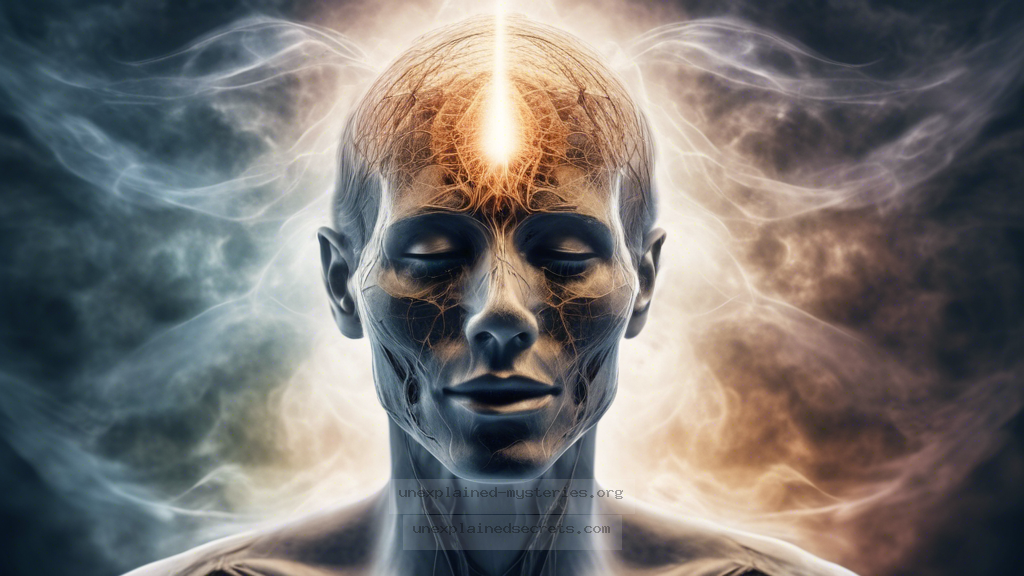What Happens to Our Consciousness After Clinical Death? Unraveling the Mystery of Near-Death Experiences
What Happens to Our Consciousness After Clinical Death? Unraveling the Mystery of Near-Death Experiences
The question of what happens to our consciousness after clinical death is a captivating one, particularly in the context of Near-Death Experiences (NDEs). These experiences have intrigued researchers, theologians, and the general public alike. As people recount vivid memories of their experiences while clinically dead, the implications for our understanding of consciousness, life, and the possibility of an afterlife are profound. In this blog post, we will explore the various facets of NDEs, analyze historical accounts, examine scientific research, and consider alternative perspectives on this mysterious phenomenon.
Understanding Near-Death Experiences
Near-Death Experiences are often described as profound psychological events that can occur to individuals who are close to death or have been declared clinically dead. Common elements reported during NDEs include a sensation of floating outside one’s body, moving through a tunnel, encountering bright light, and experiencing feelings of peace and transcendence. According to Dr. Raymond Moody, who popularized the term “near-death experience” in the 1970s, these experiences often lead to transformative changes in an individual’s perspective on life and death.
Historical Context of NDEs
Reports of experiences akin to NDEs date back thousands of years, appearing in various cultural and religious texts. For example, ancient Egyptian and Greek writings feature descriptions of journeys to the afterlife. In more recent history, the modern concept of NDEs gained traction through the work of researchers like Dr. Moody and Dr. Elisabeth Kübler-Ross, who explored the psychological aspects of dying and the experiences of terminal patients.
In 1975, Dr. Moody published “Life After Life,” a seminal work that compiled over 100 accounts of NDEs, providing a framework for understanding these phenomena. His research highlighted the consistent elements found in many accounts, suggesting that there may be a shared experience that transcends cultural boundaries.
Core Concepts and Theories Surrounding NDEs
There are several theories that attempt to explain the phenomenon of NDEs. These include:
- Physiological explanations: Some researchers suggest that NDEs are a result of brain activity during moments of trauma or near death, possibly due to a lack of oxygen or chemical changes in the brain.
- Psychological explanations: Others argue that NDEs may be a coping mechanism, a way for the mind to protect itself from the trauma of dying.
- Spiritual perspectives: Many believe that NDEs provide genuine insights into the afterlife, pointing to a continuity of consciousness beyond physical death.
Each of these theories provides a different lens through which to view the phenomenon, and ongoing research continues to explore the validity of these explanations.
Scientific Investigations into NDEs
Scientific research into NDEs has gained momentum over the past few decades. One of the most notable studies was conducted by Dr. Sam Parnia and his team at the NYU Langone Medical Center, which sought to explore the nature of consciousness during cardiac arrest. Their findings suggested that patients who experienced NDEs often had vivid perceptions and memories that seemed to occur after clinical death was declared.
In a study published in 2014, researchers utilized EEG monitoring to analyze brain activity during cardiac arrest. They found that brain activity can continue for several minutes after the heart stops, raising questions about the nature of consciousness and awareness during this critical time.
Real-World Examples of NDEs
Numerous documented cases illustrate the complexity and variety of NDEs. One famous account is that of Dr. Eben Alexander, a neurosurgeon who experienced a profound NDE while in a coma due to bacterial meningitis. In his book “Proof of Heaven,” he describes vivid encounters with a realm beyond the physical world, challenging the notion that consciousness is solely a product of brain activity.
Another notable example is the case of Anita Moorjani, who, after battling cancer, reported a transformative NDE. In her book “Dying to Be Me,” she describes an experience of unconditional love and understanding, which led her to a remarkable recovery from cancer against all odds. Such cases raise intriguing questions about the implications of consciousness beyond the physical realm.
Alternative Perspectives on Consciousness and Death
While many researchers focus on the physiological and psychological aspects of NDEs, alternative perspectives often emphasize the spiritual implications. Various spiritual traditions posit that consciousness exists independently of the body, suggesting that NDEs may provide glimpses into a greater reality beyond our current understanding.
For instance, many Eastern philosophies, such as Buddhism and Hinduism, offer perspectives on consciousness as a continuum that transcends physical existence. This viewpoint aligns with some NDE accounts that describe experiences of interconnectedness and unity with the universe.
Common Misconceptions Surrounding NDEs
Despite the growing interest in NDEs, several misconceptions persist. One common belief is that NDEs are universally positive experiences. However, some individuals report distressing or negative NDEs, which can include feelings of fear or encountering malevolent entities. These experiences can also lead to psychological challenges post-event.
Another misconception is that NDEs prove the existence of an afterlife. While many individuals interpret their experiences as evidence of life after death, skeptics argue that these experiences can be explained through neurological or psychological processes, emphasizing the need for further research.
Best Practices for Investigating NDEs
For those interested in exploring NDEs further, several best practices can help guide the investigation:
- Maintain an open mind: Approach the topic without preconceived notions, recognizing the diverse range of experiences and interpretations.
- Engage with credible sources: Research reputable studies, books, and articles written by experts in the field of NDEs.
- Consider personal accounts: Listening to firsthand accounts can provide valuable insights into the subjective nature of NDEs.
By employing these practices, researchers and enthusiasts alike can gain a deeper understanding of this fascinating area of study.
Future Developments and Ongoing Research
The field of NDE research is still evolving, with ongoing studies and new findings emerging regularly. Future developments may include advancements in neuroimaging techniques that allow for better understanding of brain activity during NDEs, as well as interdisciplinary collaborations that incorporate perspectives from psychology, neuroscience, and spirituality.
Moreover, increasing interest in consciousness studies may lead to broader discussions about the nature of existence and the possibilities of life after death. Such dialogues can encourage deeper explorations into the relationship between consciousness, the brain, and what lies beyond our physical reality.
Conclusion
The mystery of what happens to our consciousness after clinical death continues to captivate and perplex humanity. Near-Death Experiences offer a unique lens through which to explore profound questions about existence, consciousness, and the possibility of an afterlife. While various theories attempt to explain these phenomena, the personal accounts and transformative effects reported by individuals who have experienced NDEs challenge our conventional understanding of life and death.
As research progresses and more stories come to light, the exploration of NDEs remains a vital area of inquiry that has the potential to deepen our understanding of consciousness and the mysteries of the human experience.
Other Articles
Recent Posts
- What Happened to Flight MH370? The Conspiracy Theories That Still Haunt Us
- What Secrets Lurk Within the Walls of the Infamous Trans-Allegheny Lunatic Asylum?
- What Evidence Supports the Existence of Bigfoot in the Pacific Northwest?
- What Happened to the Indus Valley Civilization? Unraveling the Mysteries of Ancient Urban Life
- Can Telepathy Be Scientifically Proven Through Laboratory Evidence?







